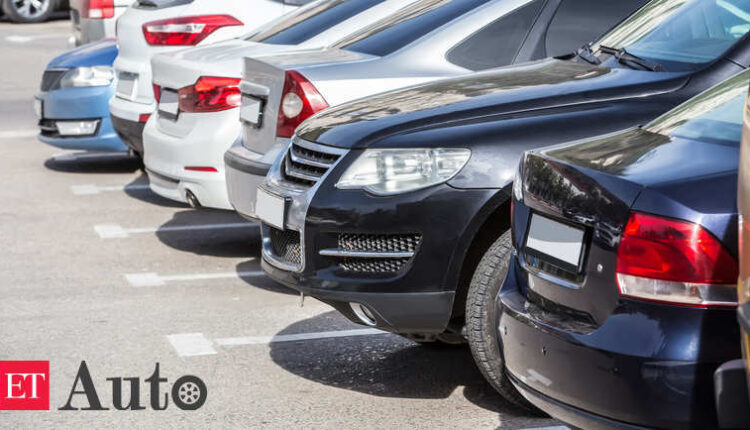
New Delhi: March 2021 portrays a grim picture. All the segments in the automotive world are in the negative. The industry is grappling with new challenges which are beyond the production woes and chip shortages. Most of the automakers are not in a position to supply enough of their popular brands leading to massive waiting periods.
Passenger vehicle sales recovered fast in fiscal 2020-21with a mere 2.24% drop. But three-wheeler sales dropped a massive 66% in the fiscal to 2.16 lakh units.
Only passenger vehicles and tractors saw healthy growth over the past few months though this could be associated with multiple factors like the low base of last year, transition from BS-IV to BS-VI and India going under total lockdown.
Industry pundits predict a tougher 2022 fiscal given the wider uncertainty and global disorder of supplies that disrupt production schedules. “This is an unprecedented time with no clarity on the production timelines. The biggest challenge is to have streamlined production with shortages of multiple products, going much beyond the chips as the global container crisis deepens by every passing day,” a senior executive, preferring anonymity, said.
Besides the production woes, 2020-21 would also be known for market share blues. The segment leader Maruti Suzuki gave in a significant amount of its pie to rivals in the absence of fresh launches and new products. Perhaps 2020 was the first year when the company failed to launch any new product or platform despite the Auto Expo in February 2020.
“The lack of any new model from parent Suzuki Motor Corporation is reflecting on Maruti’s performance. Its pipeline hasn’t been refreshed, while most of the models and platforms are losing sheen. Rival Hyundai launched 11 new cars over the past two years and consolidated its position in the SUV market. Maruti has not been able to churn out new models to face the competition prevailing in the market,” a senior auto industry executive said.
Maruti Suzuki posted a market share of 47.71% in the last fiscal against 51% in the corresponding previous fiscal. New players like Kia and MG and the traditional rival Tata Motors seem to have entered into its territory.
Infographic: Market Share Blues
| Companies | FY21 | FY20 | %Change |
| Maruti Suzuki | 47.71 | 51 | -3.3 |
| Hyundai | 17.39 | 17.49 | -0.1 |
| Tata Motors | 8.27 | 4.98 | 3.28 |
| M&M | 5.80 | 6.74 | -0.94 |
| Kia | 5.74 | 3.06 | 2.68 |
| Toyota Kirloskar Motor | 3.43 | 4.11 | -0.68 |
| Renault | 3.40 | 3.22 | -0.17 |
| Honda Car India | 3.02 | 3.68 | -0.65 |
| Ford | 1.77 | 2.39 | -0.62 |
| MG | 1.31 | 0.79 | 0.52 |
*Source: Industry reports
Some industry experts say that the absence of SUV models is proving too costly for many companies. “The data portrays a grim picture for companies lacking SUVs in the portfolio. The young Indian buyers prefer the higher stanced vehicles. They have shifted to new age SUVs that are dependable and agile, while offering the ease of driving like a compact car,” says Amit Kaushik, managing director of Urban Science, a US-based consultancy.
The notable losers are Honda Car India, Ford Motor India, Skoda Auto and Mahindra and Mahindra. They let off their ground to the Korean duo Hyundai-Kia and other new entrants.
Sluggish Commercial Vehicles remain a concern
If the commercial vehicle sale is the barometer of economic growth, for India it is steeply down with no definite signs of recovery. A 20.77% decline in the sale of commercial vehicles to 5.69 lakhs units, that too on a lower base, raises questions over the real issues bothering the economy and the Indian freight market.
A senior executive of a commercial vehicle company said that the general sentiments are weak as not only the domestic market but also the overseas orders remain sluggish affecting overall growth. “The general tendency is that after two-three years of cyclical downturn the market swings back, but this time is different. There isn’t any visible change that would make the difference and bring back the demand,” he said, preferring not to be named.
Even the fourth quarter, with signs of recovery in segments like passenger vehicles, proved to be a dampener for commercial vehicles.
“Only passenger vehicle segment grew to 9.34 lakh unit sales, marginally above the previous high of Jan-March 2018 at 8.62 lakh units. For the commercial vehicles, sales at 2.10 lakh in Jan-March 2021 were below the 2.82 lakh units sold in Jan-March 2018,” Rajesh Menon, director general, SIAM, said while releasing the fiscal data for the industry.
Two wheeler are not out of the woods
India is the world’s largest two wheeler producer and exporter. This year was entirely different. Sales of two-wheelers, mainly motorcycles and scooters, recovered and posted positive growth during the festive period but fell drastically after that. For most of the brands and products the market continues to be sluggish.
The segment remained negative even on a lower base of last year when sales were affected by the impending transition to BS-VI from April 2020, and also by the Coronavirus pandemic and the nationwide lockdown from mid-March.
Sanjay Bhan, head – global business, Hero MotoCorp, said, “Hero MotoCorp’s global business has been gaining traction and we are optimistic of maintaining the healthy growth trajectory across geographies in the coming months.”
In FY21, while the entire auto industry witnessed significant disruptions triggered by the Coronavirus pandemic which restricted customer movement, two-wheeler sales were particularly hit with the challenges of rampant job losses and business downturn.
Companies like Honda Motorcycle and Scooter India, TVS Motors, Bajaj Auto, Suzuki Motorcycles India and Yamaha remained under stress with demand tapering off in the fourth quarter. Two-wheeler sales in Jan-March 2021 were at 43.54 lakh units against the Jan-March 2018 figures of 51.13 lakh units.
Three Wheeler remain in the Dump
There has been no word from the makers of three-wheelers which continue to reel under the pandemic problems. Three-wheeler is the worst performing segment with no signs of revival. According to the SIAM data sales of all the players were negative by huge margins. Overall sales dipped 66.06% to 2.16 lakhs units.
There are no real incentives to buy an ICE engine three-wheeler and many players like Mahindra Auto and Kinetic are leading the change to EVs. While the vehicle prices are constantly on the rise due to BS-VI emission norms and increasing raw material prices in general, the low-income category customers are not able to pay EMI’s due to poor income. This coupled with the social distancing norms and closure of educational and commercial institutions and offices are keeping riders away.
The Future
The outlook remains bleak amid the overall uncertainty in the industry with the disruption in the supply chain owing to semiconductor and raw material shortages, and lockdowns. In an environment of uncertainty, it is difficult to predict the future. However, the times ahead of the Indian automotive industry remain to be very tough.
In the entire value chain only tractors had a dream run as rural incomes improved after successive monsoons and good rabi production. With a normal monsoon for the 3rd successive year likely, tractors are expected to perform well in FY22 also.
The second wave of COVID-19 is not only spreading fast, but is also destabilizing the growth which the country achieved in the past few months. The impending lockdown might severely hamper the momentum of the auto industry’s efforts to come out of the woods.


